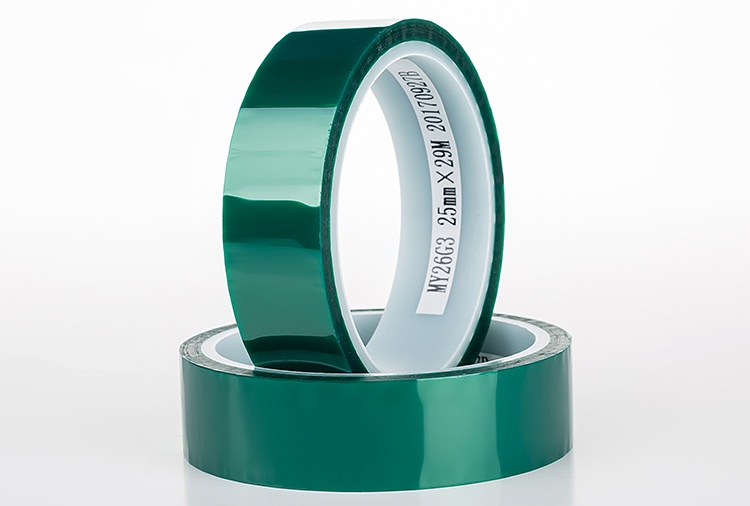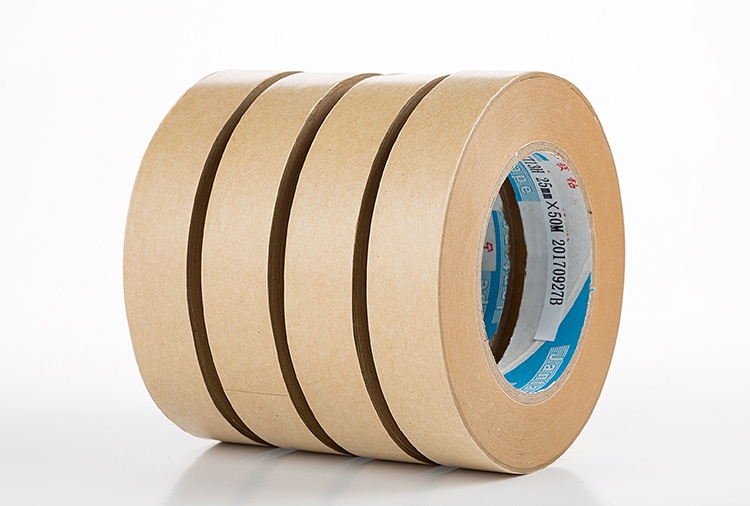Joint Tape
Joint tapes are widely used in the splicing and overlapping of various roll materials such as paper, film, metal foil, etc. during processing.
Production Process Flow
From raw materials to finished product, every step is rigorously controlled to ensure consistent and reliable performance.
Insulating: Polyimide (PI), PET film (heat resistant 150-200°C).
Conductive: Metal foil (copper, aluminum) or conductive fiber cloth (requires composite insulation layer).
Adhesive:
High-temperature-resistant silicone (heat resistant above 200°C) or modified acrylic adhesive (balanced adhesion and heat resistance).
Conductive adhesive (for conductive joints): Add conductive fillers such as silver powder and carbon powder.
Auxiliary materials: Release paper, flame retardants (such as aluminum hydroxide), UV inhibitors (for outdoor use).
Cleaning and Activation:
Plasma treatment or chemical cleaning to remove oil and dirt from the substrate surface (metal foil requires anti-oxidation treatment).
Primer Application (optional): Enhances the bond between the adhesive and the metal/plastic substrate.
Insulating Tape:
Directly apply high-temperature-resistant adhesive, dry, and laminate with release paper (processing is the same as for conventional high-temperature tape). Conductive Tape:
Double-Sided Conductive Type: Conductive adhesive is applied to both sides of the metal foil, followed by drying and a protective film laminate.
Single-Sided Insulated Type: Insulating adhesive is applied to one side of the metal foil and conductive adhesive is applied to the other side.
Drying Conditions: Temperature control is performed in stages (e.g., 80°C → 120°C → 150°C) to prevent blistering of the adhesive layer.
Slitting: Cut according to the required joint width (commonly 1mm-20mm).
Die-Cutting (Key Step):
Punching: Processing into special-shaped structures such as perforated, L-shaped, and U-shaped (for tab connections).
Waste Disposal: Automatically removes scrap to ensure burr-free edges.
Hot Press Curing (Optional): High-temperature pressing improves the bond between the adhesive layer and the substrate.
Surface Coating:
Insulating Type: Spray-on ceramic coating (enhances arc resistance).
Conductive Type: Nickel/Tin plating (anti-oxidation, reduces contact resistance).
Anti-static packaging: Conductive tape must be packaged to prevent static electricity from attracting impurities.
Labeling: Indicate the conductive/insulating surface, temperature rating, and resistance value.
Joint Tape Series Specification Sheet
| Name | ltem No.Model | Material | Colour | Adhesive | Tack | Adhesion Strength | Tensile Resistance | Temperature tolerance |
| N | N/25mm | N/25mm | ℃ | |||||
| Polyester tape | MY36 | PET | Red/Green/Blue | Silicone | 3↑ | 8↑ | 150↑ | 200 |
| Polyester tape | MY26 | PET | Red/Green | Silicone | 5↑ | 7↑ | 120↑ | 200 |
| Polyester tape | MY28 | PET | Red/Green | Silicone | 5↑ | 8↑ | 120↑ | 200 |
| Polyimide tape | KA06 | PI | Yellow | Silicone | 1↑ | 4.5↑ | 110↑ | 250 |
| Kraft paper tape | KT13H | Kraft | Yellow | Acrylic Acid | 5↑ | 12↑ | / | 150 |
| Polyester tape | MY27 | PET | Transparent | Acrylic Acid | 2↑ | 8↑ | 120↑ | 150 |
| Polyester Double-Sided High-Temperature Tape | DS18T | PET | Yellow | Acrylic Acid | 5↑ | 15↑ | 60↑ | 150 |
| Polyester Double-Sided High-Temperature Tape | DS20T | PET | Yellow | Acrylic Acid | 9↑ | 16↑ | 60↑ | 150 |
| Cotton Double-Sided High-Temperature Tape | DS90H | CP | White | Acrylic Acid | 5↑ | 12↑ | 15↑ | 150 |
| Cotton Double-Sided High-Temperature Tape | DS312H | CP | White | Acrylic Acid | 5↑ | 15↑ | 15↑ | 150 |
Technical Showdown: Paper vs. Fiberglass Mesh Tape
The choice between paper and fiberglass mesh is a foundational decision in drywall finishing. While both aim to create seamless, crack-free walls, their properties dictate their best use cases and application methods.
Functions, Uses, and Applications
Joint tape is an essential material in drywall installation and repair. Its core function is to reinforce seams between drywall panels, preventing cracks and creating a smooth, seamless surface for finishing.
Quality Standards & Certifications
Jiujiang Leadcomp Co., Ltd. is committed to delivering the highest quality products, a promise backed by strict internal standards and authoritative third-party certifications.





